Gold Maps for Google Earth Pro
WMH Gold Maps for Google Earth Pro are designed to locate areas with high potential for finding placer gold. The following files are included in each state-based package:
- Locations of all mines in the USGS MRDS database that have gold as a primary commodity
- Locations of all mines in the USGS MRDS database that have gold as a secondary or tertiary commodity
- Locations of all PLSS sections that contain active placer mining claims
- Analysis layer that summarizes data for mines and claims by township
- Ranking layer that identifies the top townships by density of placer claims and gold mines
- Gold district locations
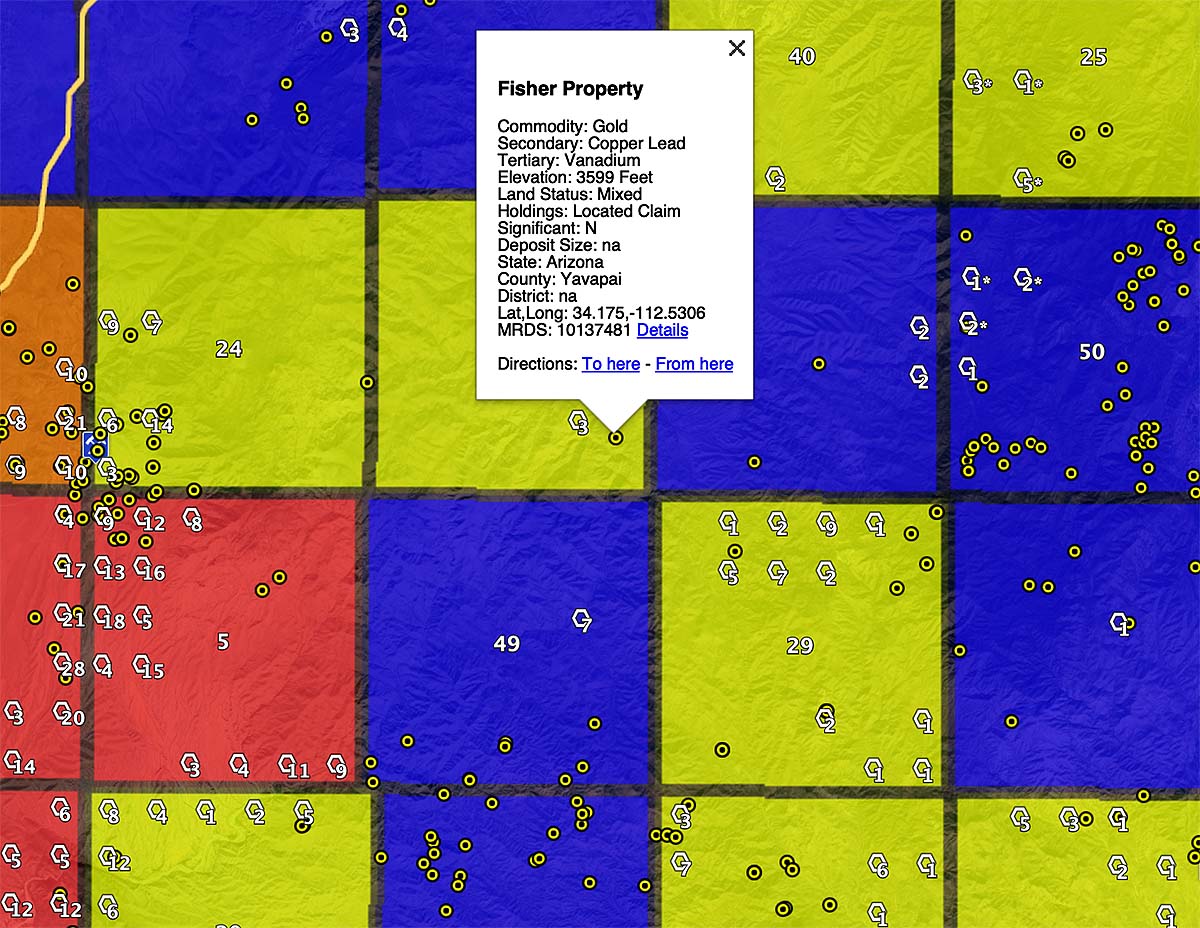
WMH Gold Maps can be used in Google Earth Pro or GIS applications to research areas with gold discovery potential. These mapping tools visualize related data sets that together identify areas of high gold potential by looking at where historical gold mines are located, and where placer mining is still occurring today.
Gold Mine Data
Gold mine data comes in two file formats: CSV and KMZ. The records separated into groups of mines where gold is the primary commodity, and where gold is either a secondary or tertiary commodity (secondary and tertiary data is combined in the “secondary” layer). The groups are further organized into counties.
The KMZ files are ready to use in Google Earth, simply open them and activate the layer and the mines will be displayed.
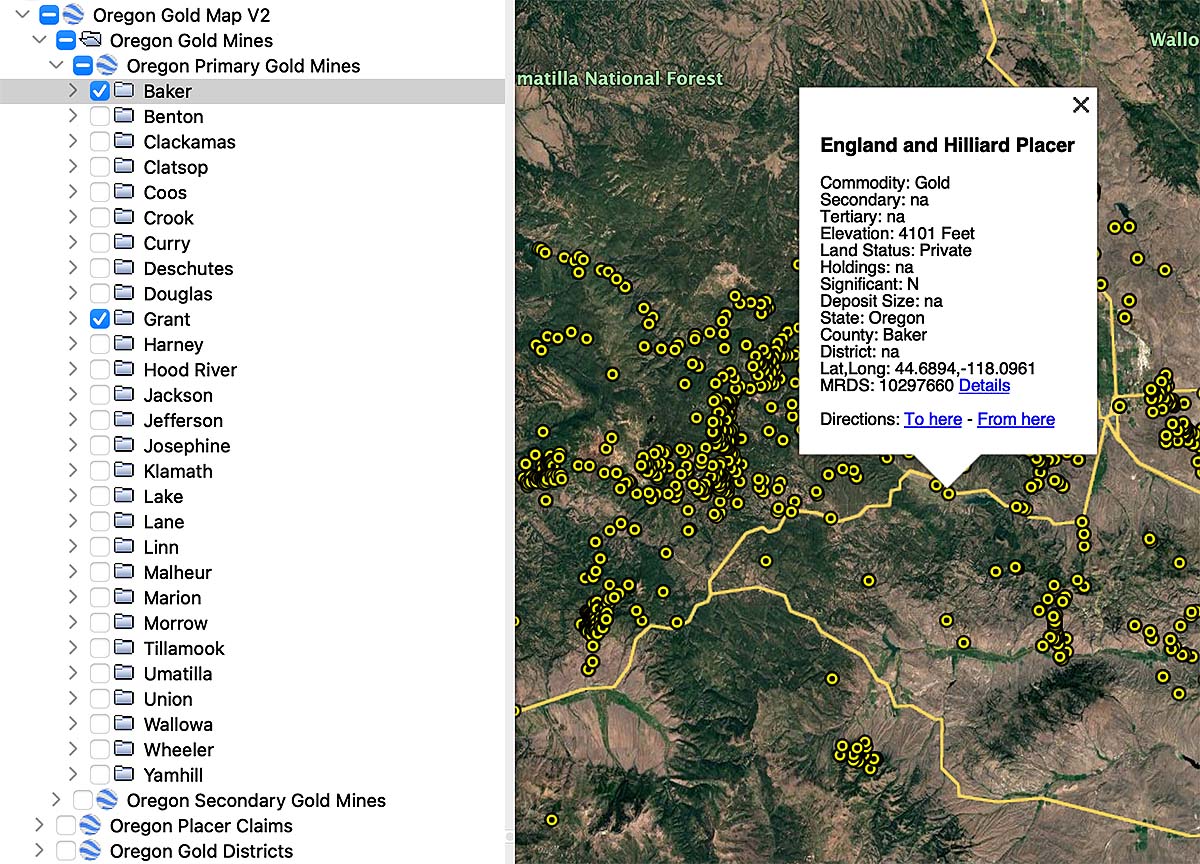
The CSV files can be used in GIS, database, or spreadsheet applications. This data can also be imported into Google Earth to create your own custom views.
Important note on mine data: Although the USGS MRDS database contains a lot of valuable information, it is far from perfect. There are numerous duplicate mine records and records with bad coordinates. You can expect to see mines that are clearly in the wrong county or even sometimes the wrong state.
Despite these issues, the majority of the mine records are either precisely located, or at least located in close vicinity to the mine. Additional research using topo maps, USGS publications, or satellite imagery may be needed to find the mine features you are interested in.
Placer Claim Data
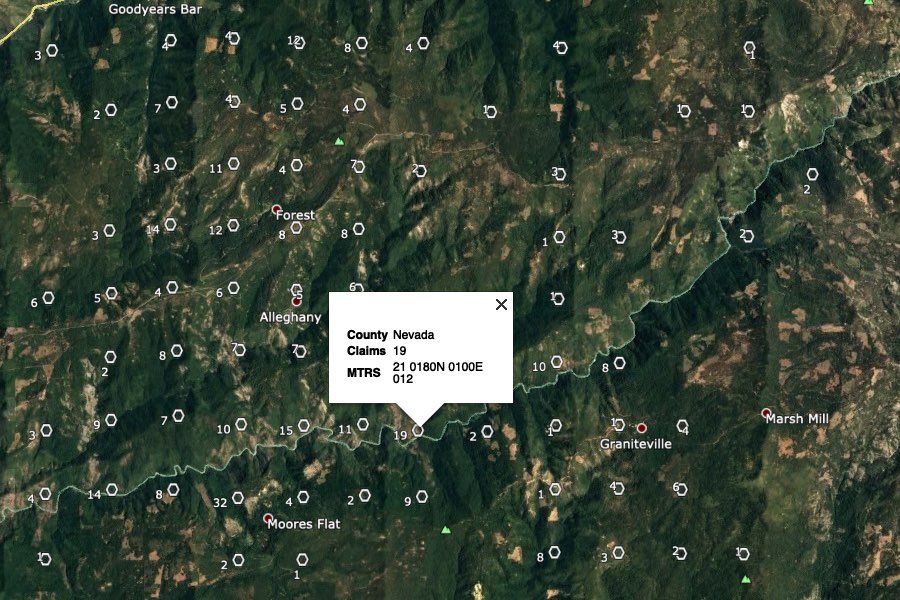
The CSV file contains all PLSS sections that contain placer claims in the state and can be used in GIS, database, or spreadsheet applications. This data can also be imported into Google Earth to create your own custom views.
The KMZ files are ready to use in Google Earth, simply open them and activate the layer and the claim data will be displayed.
The info windows display the number of claims and the MTRS value of the PLSS section that the claims are located in. MTRS is the acronym for Meridian, Township, Range, Section, and represents the grid system used to survey public lands. The MTRS value for each claim marker can be used to shortcut the BLM MTRS claims index search form, saving a lot of time in what is generally a very slow and cumbersome system to use.
Note that the placer claim data is meant to be a guide as to where modern claims are located. It is not an up to date source of claim data, claim research should always be finalized with the BLM MTRS application. For more information view the following article: Researching Mining Claims with the BLM MTRS.
Current maps contain claim data retrieved from the BLM August, 2020
Gold Region Analysis by Township
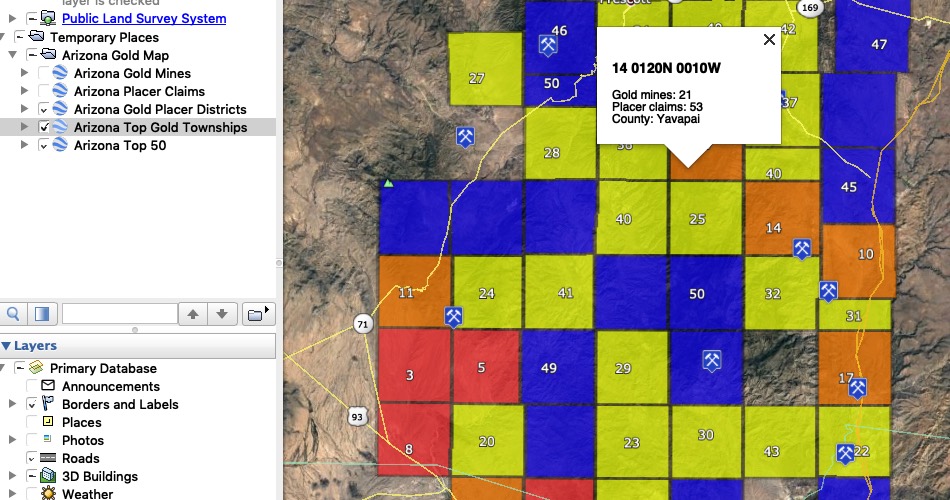
This layer identifies which PLSS townships have both active placer claims and historical gold mines. This correlation is valuable for two reasons – first it identifies areas where placer claims are maintained for the purpose of gold mining rather than mining of other surface commodities like gypsum or potash. Second it allows a quick view of the density and distribution of gold mining areas across a state.
Townships that contain both active placer claims and historical gold mine records will be shaded in one of the following colors based on how many active placer claims are in the township:
1 – 10 claims: blue; 10 – 50 claims: yellow; 50 – 100 claims: orange; More than 100 claims: red
Also included is a layer that ranks the top 50 gold-bearing township by the total number of claims in them.
Gold District Locations
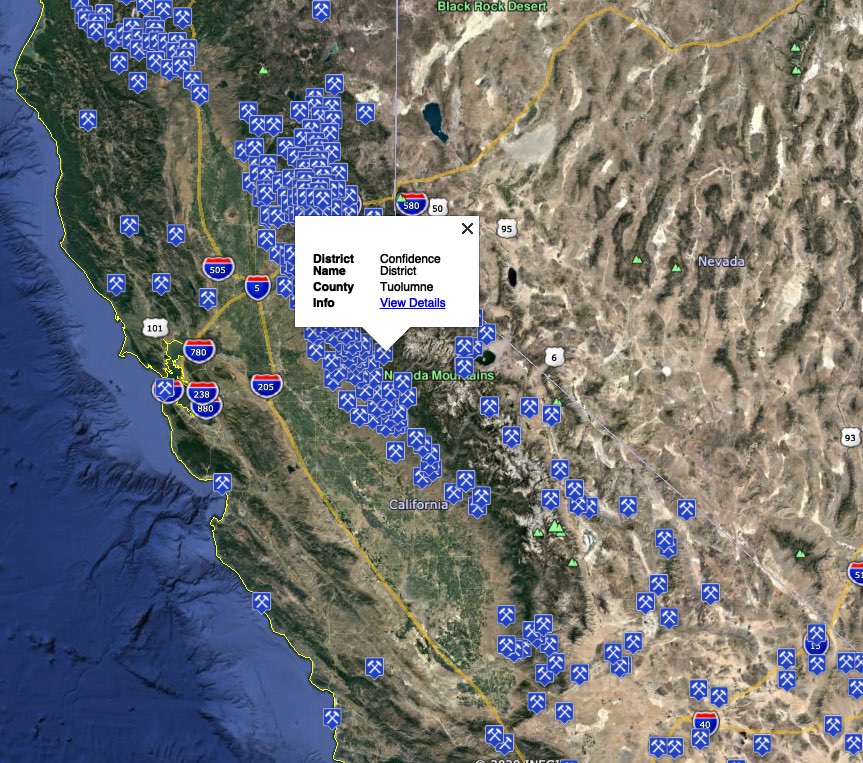
The locations of historical gold mining districts are included.
Purchase Gold Maps
There are no refunds on digital products. Please take some time to understand what you are buying. These packages are intended for use in Google Earth Pro, they are not mobile apps. Please contact us before purchasing if you have questions.
Click on any of the links below to visit the store page for that product.